I cannot believe this is our last blog post! The summer has flown by so fast! However, I am excited because that means it is crunch time to get our sites organized and finished.
When the month started, I had already decided what my pages would be and how I would organized them. I thought the hard part was over....I was wrong! I have spent most of the month compiling information on my two major pages, the people involved and the causes. Luckily, my sources I chose have been very full of information. I do not think it will be that hard to get the information that I need.
I have decided to save my two major categories for last. Mostly, because I'm not quite sure what I want to say. I have all the information right in front of me, luckily. I did spend most of this week working on my other pages. I think they are coming along nicely. I need to add a few extra sentences and images to each of the pages to make them more interesting.
The biggest problem I have come across since I started working on this was how to do internal links! For example, the "People Involved" page will include the words "The Accused" and "The Afflicted." I wanted it to be where you can click on those words and it would take you to those pages instead of having to go back up to the top bar. I wanted it to be the same on the individual pages so that people can click on a person's name and it would go to their page. It took forever to figure out, but my boyfriend and I finally figured it out! It felt like I had hiked a mountain!
I really haven't come across any other problems. However, I do have one question. If I'm going to put something from one of my sources should I cite it like I would in a paper?
Other than those minor bumps, I mostly have details to work out! I cannot wait for everyone to see it and vice versa!
I finally got the book by Norton and started reading up on King Philip's War again. It is very helpful! I'm glad I got the book again! I think it will be helpful in finding information on the people my website will talk about, as well. - Ann Putnam, Jr.'s father, Thomas, was a veteran of the War.
- Mary Walcott's great uncle, George Ingersoll, was a lieutenant during the time of the War. He witnessed some gruesome events.
- Many of Mercy Lewis's relatives were killed during the assault on Falmouth.
- George Burroughs was actually the minister there until the assault, and he did not return until 1683.
Although, this book is mostly focused on how the wars were connected to the trials, it does briefly mention other possible reasons. Norton talks about how some scholars looked at ergot poisoning and encephalitis. Ergot poisoning is already a big part of my research, but I never thought about encephalitis. I will have to look more into it and maybe add it in. Next, I will be looking into hysteria, fraud, and grudges as reasons for the trials. In a book by Bernard Rosenthal, I found many instances that make fraud and hysteria seem like plausible reasons. There was an instance where Elizabeth Hubbard (an accuser) was being guarded. She saw the spectral of Sarah Good (an accused who was tormenting her). Her guard struck at Sarah Good, without seeing or feeling anything. Supposedly, the attack left Good's arm injured. Rosenthal asks why didn't Good flee after attacking Hubbard? She could obviously move around freely. That leaves us with fraud. Hubbard had to know about Good's injured arm previously to being "attacked." It could have been hysteria, but that would only account for seeing Good, not her injury.
I'm realizing that I have a lot of work that I need to do on my site. I haven't actually posted anything on my site. I have just been compiling information. I think I will go ahead and do the easy parts (sources, gallery, homepage, etc.) that way I can focus on the hard parts for the rest of the class.
I'm starting to compile information for the causes of the Trials. I was going to focus on King Philip's War and ergot poisoning for right now. There are not many books in the library on either subject, but I was able to find a few articles.
As I looked at websites about King Philip's War, I had a hard time finding connections between the War and the Trials. However, I did find one article, by Benjamin C. Ray, that reminded me why I thought it was a cause in the first place. There were people who were directly affected by the War that lived in Salem Village. Mary Beth Norton's In The Devil's Snare goes into more detail about the subject. I believe Norton's book will be very helpful for this topic.
Ergot poisoning was a little easier to research. Linnda Caporael wrote an article in the 70s proposing ergot poisoning as the reason for the Trials. It is a very fascinating subject. I believe this could very well be the reason for the Trials. I found a few other articles to help back up my research. I found one by Mary K. Matossian. Matossian compiled mounds of research on ergot poisoning and witchcraft. Her focus was mostly in Europe, but the article I found was on Salem. I believe it will be useful. Nicolas Spanos and Jack Gottlieb wrote an article as a rebuttal to Caporael's research. I used it in previous research. I think it will give more perspectives about the subject.
As far as my website goes, I have titled every page. Today, I hope to write my homepage, add images, and start adding the information for the causes. I'm pretty excited about where this is o
Now that it is July, it is time to start working on my website. I am beginning to realize that there is a lot that goes into the making of a website. You have to decide how to map it out, what topics/pages to include, what to write, and what kind of images/videos/audio will be included. I have begun to map out my website and think about how it will look. This an "outline" look of what I think my site pages will be: - Homepage - This will be where I talk about the purpose and mission of my website. This will be where I give the basic story of the Trials. I will include maps and a few images here, as well.
- People Involved - Here is where I will give the option to look at "The Accused" or "The Afflicted." I will tell a little about each category. I want to include images of as many of the people as possible.
"The Accused" - Here I will have a list of people who were accused of witchcraft during the Trials. Users will be able to click on a person to learn more about them. "The Afflicted" - Here I will have a list of people who were afflicted/the accusers during the Trials. Users will be able to click on a person to learn more.- Reasons for the Trials - This section will be dedicated to the research that I have been conducting as to why the Trials even happened. There will be a section about each of the possible reasons, which will include: King Philip's War, ergot poisoning, fraud, hysteria, and grudges. Hopefully, I can find images and videos to help make these sections more interesting.
King Philip's War - I will provide information about this topic to suggest why it could have started the Trials.
Ergot Poisoning - I will provide information about this topic to suggest why it could have started the Trials. Fraud, Hysteria, and Grudges - Because these may be more about speculation rather than based on actual evidence, there may not be as much information, so I might just bunch them together. - Gallery - Here I would like to compile all the images/videos/audio together so that users may look at everything together, instead of trying to find which page they saw something on.
- Sources - This will be where I will provide the sources for all my information. I will list all books, articles, and websites. Also, I will show where I found the images/videos/audio.
- Fun - I thought I would add this last section to provide extra research and information for users. I would like to list museums and other notable places/websites that users might want to visit or look into.
This is currently how I envision my site. Obviously, there could be changes made as time goes on, but I believe I like this set up. Also, I began to look at images that I might use for my site. I was really worried about copyright infringement, until I realized that most of the images I need were produced way before copyright laws were brought up. Most of what I will need will be in the public domain. These are a few of the images that I'm thinking of using: If you have not already figured it out, you can click on each picture to see it individually, along with a caption. There are many more images out there that I would like to use. I cannot wait to add to the collection.
For our third blog assignment, we were asked to read an article by Patrick Leary, "Googling the Victorians." The article talks about the intricate web people have to go through on the internet to find certain things. Many pieces of information get lost or forgotten, but the web can help us make our way to finding them.
For me, the internet has had a big influence on my research (past and present). When I hear of something that interests me, I instantly Google it. Most searches lead me to Wikipedia. I know Wikipedia is not a great source, but for me to get an idea of what I'm looking for, it tends to help. Once I have learned a little about what I am looking for, I look into more reliable sites. When I want to find books about certain topics, I will search a certain phrase in Collier's UNACat or on Books-A-Million's website.
I know I have had an experience like Leary did with "Please to remember the grotto;" however, I do not remember a specific experience. I am constantly finding pictures, phrases, songs, and stories that really interest me, but I will forget where I have seen them. I will search what I can remember, and work through what I find. It becomes a series of hits and misses. However, with persistence and determination, I usually find what I am looking for.
Now that I think of it, there was a time that I had an experience like Leary. I was in class one day, and I'm almost positive it was the Public History class that I took, and our guest speaker was talking about how the shoals area looked in the past. A picture of a huge, gorgeous building caught my eye! I kept thinking to myself, "How have I never seen this building?" Then the speaker revealed that it had burned down a long time ago. I would go through the process of how I found it, but I completely forgot about it! I am going to research and find it again, and when I do, I will post it!
There are many positives and negatives to using the internet for research. A positive is that the world is at your fingertips. You can access almost anything, anytime, anywhere. There are so many resources that your local libraries might not have. I have found many books in the library that were essential to my research, but the internet allowed me to find articles that helped even more. A negative is that you cannot always trust what you read online. Many people make sites, and they do not always have the right sources or the right information. We should really make it a point to only get information from a scholarly site. In the past, when I found information that I thought about using, I would look up the person who posted it and see if they really were a professional in their field.
I do not think the internet can substitute an archive. Some people are more comfortable with the internet and would disagree. However, I like to see the real thing. I have not done research in an archive, but if I had the chance to go to Massachusetts and search actual records from the Trials, I would. Nothing beats the sensation you get when you are acting like Sherlock Holmes, trying to find the next clue.
I found it!!!!! I believe I spent an hour and a half looking for this! I tried every search phrase I could think of about schools in florence for girls. I finally remembered the speaker saying something about there being a water tower or a bell tower, and that became part of my search. I found information about the old water tower on Seymore Avenue. It was like a lightbulb had gone off. I was so close I could taste it. I knew where the school had been located, but still could not think of the name! I was about to give up and started looking at information on the Florence Synodical Female College; believing that was the school and it just was not as grand as I remembered. Most of my search consisted of sifting through images. All of a sudden a familiar building caught my eye! I had finally found a photo of that magnificent building! Luckily, the photo came from the blog of the very guest speaker, Dr. David Curott, that had informed us about it. It was a relief to finally find it. This building is the Southern Female University/Florence University for Women. It was originally going to be a baptist college when it opened in 1891. However, support withdrew and moved the school to Birmingham. In 1908, the doors were opened for the SFU/FUW. However, it was not very popular (because of location) and the school burned in 1911. I wish I could go back and see this building. It looks like it would be breathtaking to be near. I mean, it is five stories tall. That can give you some perspective to just how big this building was. I'm not positive how to cite this information, but the photo and the information on the building all came from Dr. Curott's blog, http://drcurott.blogspot.com/2013/01/here-today-gone-tomorrow.html.
For our second blog assignment, we had to read “Digital Junctions” by Debra DeRuyver and Jennifer Evans. Their article talks about the various types of databases that contain primary sources and how approach them during research. In the introduction to the article, DeRuyver and Evans ask us if the web will become “invisible.” Will it cease to be relevant while at its height? This is a similar question we had to face in one of our discussion posts. They briefly point out that scholars are “illiterate” in technology. I feel that at the time the article was written, that was very true. Scholars, especially historians, tend to stay in the comfort zone of physical materials. While I am not very different, I am much younger and have grown up in a different age. I have grown up with computers and learned how to use them at a young age. I believe my generation can bring the “literacy rate” (in technology) of scholars to an all-time high. One aspect we can/need to work on is how to better organize all the information that we are trying to save. Patricia Lemerick presented this issue in her presidential address to the American Studies Association. She notes that we have easier access to many materials; however, trying to sort through them, and the ever-changing technology, can get overwhelming. The rest of the article presents us with how to start looking for primary sources and where to look. DeRuyver and Evans suggest starting with a librarian. They know exactly which databases, or print material, to look for. Next they suggest a search engine, which is not always the best idea. Search engines, such as Google, can be too broad. It would be better to check a database or site that would have primary sources. Before briefing us on the types of primary sources there are, they tell us how to see if a site is reliable. They tell us to look for interpretation, primary sources, educational items, and promotion of community of interest. In the next step of my assignment, I will use these to help me determine if a database or site is useful to me in my research. After listing and briefly describing the different types of primary sources, they give us a list to links of digital resources. The second part of my assignment is to find a database and see what sources are available. There are a few questions that Dr. Barske would like us to consider about the sites. - What types of sources are available?
- Is it easy to use?
- What “other” information is available?
- What did you find?
- Can it help with your research?
The website I chose came straight out of the article. There was a paragraph that actually talked about the Salem Witch Trials. The website that they mentioned was etext.virginia.edu/salem/witchcraft/. I thought that would be a great place to start. As I started reviewing the site, I noticed that it was very simple and that it was familiar. I believe I have used this site in prior research. It is a compilation of materials that was formed by a class at the University of Virginia, and it has not been updated since 2007 (as far as I know). However, I thought it would still be a good source of information. 1. What types of sources are available? There are all types of sources on this site! There are documents and transcripts, maps, archival collections, books, and people. The documents appear to be a mix of machine-readable text and copies of original text. The maps are small, but you are able to view them in different sections. This allows you to view it larger and receive the full aspect of the map. The archival collections consists of links to different archives such as: the Boston Public Library, the Massachusetts Historical Society, and the Massachusetts Archives (which I will come back to later). The section on books contains information on books written by people of that time period such as Increase and Cotton Mather. Lastly, there is a section on the people involved in the trials. There are different categories from the people executed to the “afflicted” girls. 2. Is it easy to use? This site is quite simple and easy to use. The homepage is a little difficult because most of the topics are color-coded, and the colors do not seem to match up all the time. However, the homepage does look similar to an essay outline. It seems the easiest way to navigate the site is by clicking a link on the homepage and then following the horizontal bar at the top that contains the topics. 3. What “other” information is available? There is not much more information, since the site is about a specific topic, but there are a few other features. There is a link to a page that presents the mission of this project. There is a pages that tells about the class that produced this site. There is a page that lists historical works from people of that time period to more recent authors. A database search link is provided, but not accessible for some reason. 4. What did you find? I feel that the answer to this question lies in the answer to question one. There is a tremendous amount of information on this site. 5. Can it help with my research? I really believe that this site can. All of the information seems to be cited which would allow me to find the original source. Also, it provides help in figuring out how I might set up my website. There are plenty of resources on this site. Just to make sure I was being thorough, I quickly searched the Massachusetts Archives ( http://www.sec.state.ma.us/index.htm). However, I was very disappointed. I am aware that the Salem Witch Trials is not the only major event to ever happen in Salem or Massachusetts, but I assumed that I would be able to find more information than I did. I tried searching on my own and was unsuccessful. I went back to the first site and looked at what they had found in the archives. There were pictures of the original documents (illegible on a computer screen) and no physical links, but I now knew what to look for. Information for the Salem Witch Trials can be found in Volume 135, but not online. I suppose I will have to physically go to the archives if I want to view the documents.
For the first blog post, we had to read an article by Anne Lindsey, "#Virtual Tourist: Embracing our Audience through Public History Web Experience." It was a very helpful read. It helped me realize that we, as public historians, have to keep up with the times and embrace the change of the physical experience to the virtual experience. Many people do not have the ability to travel to the various places that they would like to go, and this is where museum websites can come in handy; if done properly.
Websites can be expensive to make, but that does not mean that an institution's site has to be lacking. Institutions need to be in-depth to help draw in people and make them want to visit in the future. An analogy that Lindsey used helped me understand some websites. She said that some websites are like pamphlets. They have all the basic information and brief examples of why you should visit, along with pictures and sometimes map directions. I like this analogy because not too long ago, my mother went out of state for a funeral, and along the way she picked up pamphlets of museums and tours that she thought I would be interested in. Websites that act like pamphlets can really pull people in, but sometimes that just is not enough.
Another part of the article talked about how public historians need to think like "outsiders." This made me realize that we have to realize the way people receive their information is changing. We need to take advantage of social media, such as Facebook, Twitter, Tumbler, Instagram, etc. I liked how she also presented four questions for institutions to think about when they create their sites:
1. Is the website for basic information?
2. Is it a tool for advertising?
3. Is it to create positive customer relationships and loyalty to the brand?
4. Is it a forum where guests can engage in an educational experience?
Even though there are many advantages and upsides to embracing the move to digital life, there are always disadvantages. With public history, one of the main disadvantages always appears to be that the viewers cannot ask questions, they do not get the physical experience, and they do not always get all the information that is needed.
For the second part of this assignment we had to find three historical organizations and review their websites.
www.salemwitchmuseum.com
I chose the Salem Witch Museum because that is what my website will be about. It is absolutely one of my favorite topics, and I have always wanted to visit Salem.
When you first go to the home page, the background is a picture of the front of a building (which turned out to be the museum). It looks like it came out of that time period and it draws you in. There is a top bar with three topics: Salem Witch Museum, Salem Witch Trials, and Museum Store. Each of the topics has a drop-down menu that leads to various links. At the top of the website there is a picture of a map that you can click. I assumed it would give you directions to the museum, but it was even better! It was a map of Salem, with all the different places that you could go visit as a tourist, including the museum. To make the map even better, it had little pictures of bats, ghosts, pumpkins, and other supernatural characters. The hours of operation and the prices were easy to find, as well as events that will be taking place.
There were many different links to various topics. There was one that talked about the statue outside of the museum. There is a slight interactive tour. There are many that talk about the witch trials, and they tell you where you can find more information. There is also a blog that is kept by the museum. It is very extensive; covering many topics and having posts dated all the way back to July of 2010. I also discovered that that have links to Facebook, Twitter, and Youtube.
The only downsides that I found with this website, was that the contact information link did not work. However, the address and phone number was listed at the bottom of every page. They also have an online gift shop where you can buy souvenirs from home, but it is temporarily closed.
Overall, I found this site to be very helpful and educational! However, I guess I am a little biased.
Andersonville
www.nps.gov/andes/index.htm
This site is technically part of the National Park Service, therefore, it was very simple and neat. Everything on this site is easy to locate. I found the directions, hours of operation, and fees automatically. There are photos and multimedia presentations that are available for viewing. There are many topics to read about on this site, as well. The contact information was all available. There are links to Facebook, Twitter, Youtube, and iTunes. I'm not really sure why they need a link to iTunes, unless it is for a podcast about the parks.
Although, this website covers its information well, I feel like it needs more flair. Something to make it more appealing. However, since this is just one site of many on the NPS website, I can understand why they would make it as simple as possible.
Lizzie Borden House
www.lizzie-borden.com
This bed-and-breakfast/museum is on my list of places I would REALLY like to go. I was sure that I had viewed this website before, but it has changed and I'm not sure that it is for the better.
The home page is a little hard to follow. All the links are there, but it is kind of confusing. The main block on the home page (and every page as I discovered later) say my shopping cart is empty. The link to the gift shop is in the block right next to that, but it is still a little strange. The directions and contact information were easy to find, as well as room availability and how to reserve a room. After finding all of this, I realized that was the extent of access, unless you were part of the community.
To access all of the video tours, you have to become a member of the Lizzie Borden Community. It is free to register, so I did. I was then able to access the videos. They were a disappointment. The quality was very low and it was not very professional. There was also a section called Lost Lizzie TV. It has many videos about Lizzie Borden and the case against her. All appear to be low quality, as well.
As much as I want to visit the Lizzie Borden house, I do not feel that anyone would benefit from learning everything from this website. Oh, they do have a link to Facebook, so that is a plus.
I highly enjoyed the reading and research for this assignment. Hopefully, if anyone reads this they will find it helpful and resourceful.
|
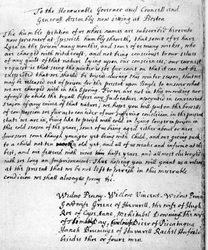
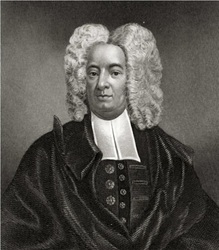
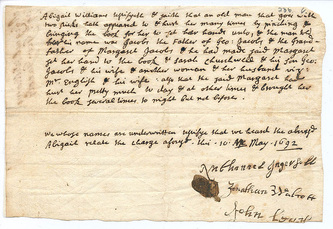
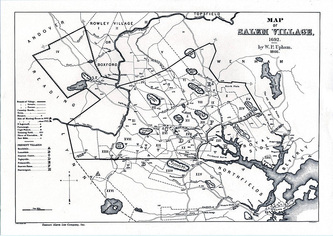
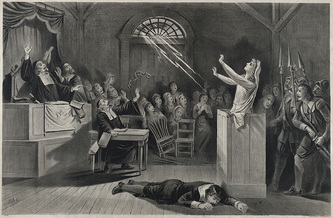
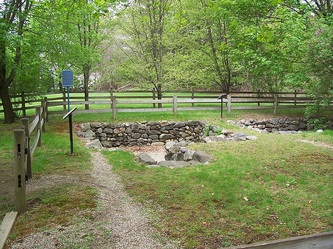

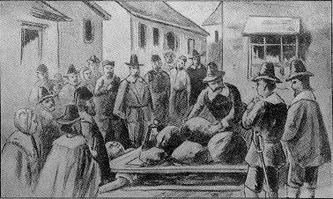
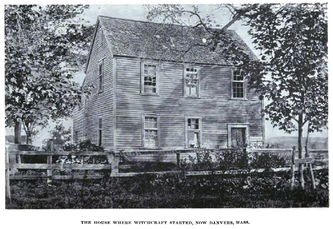
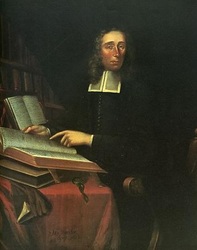
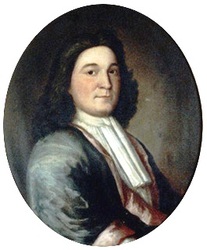
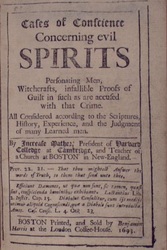
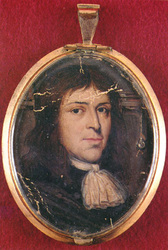
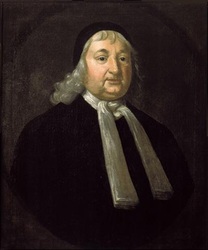
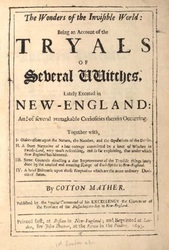
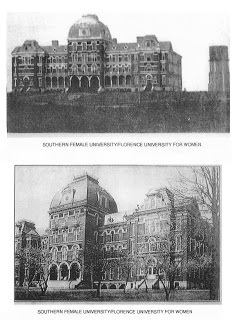
 RSS Feed
RSS Feed